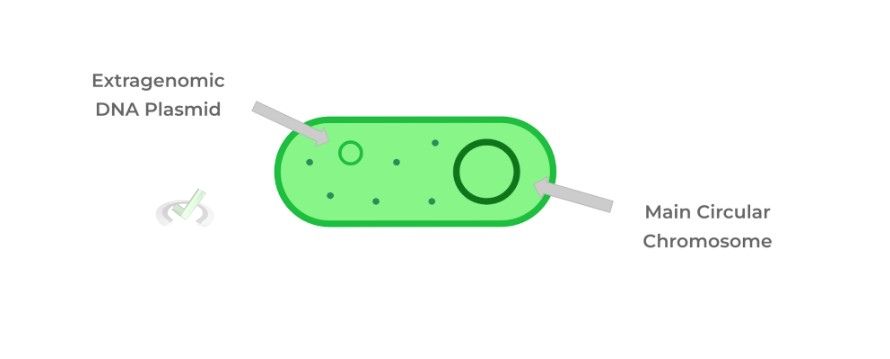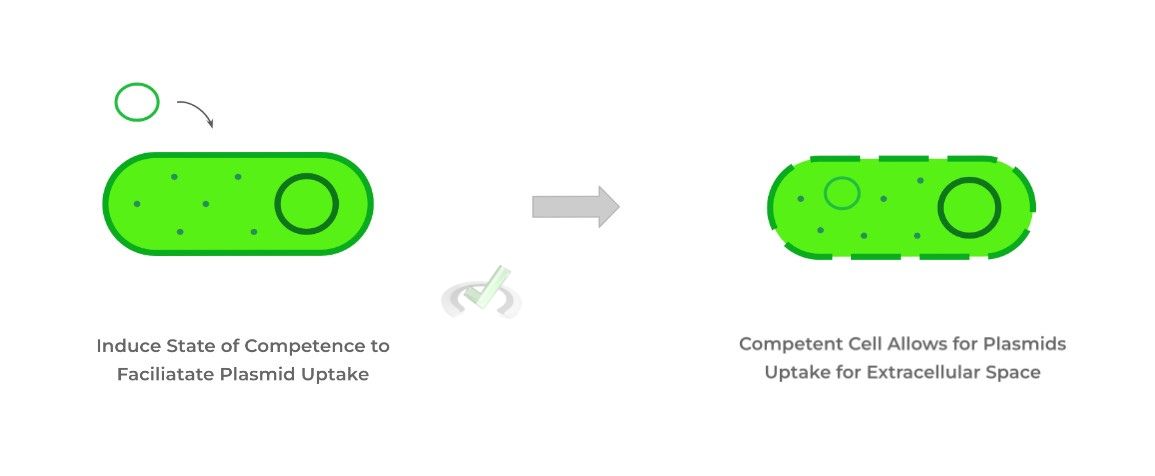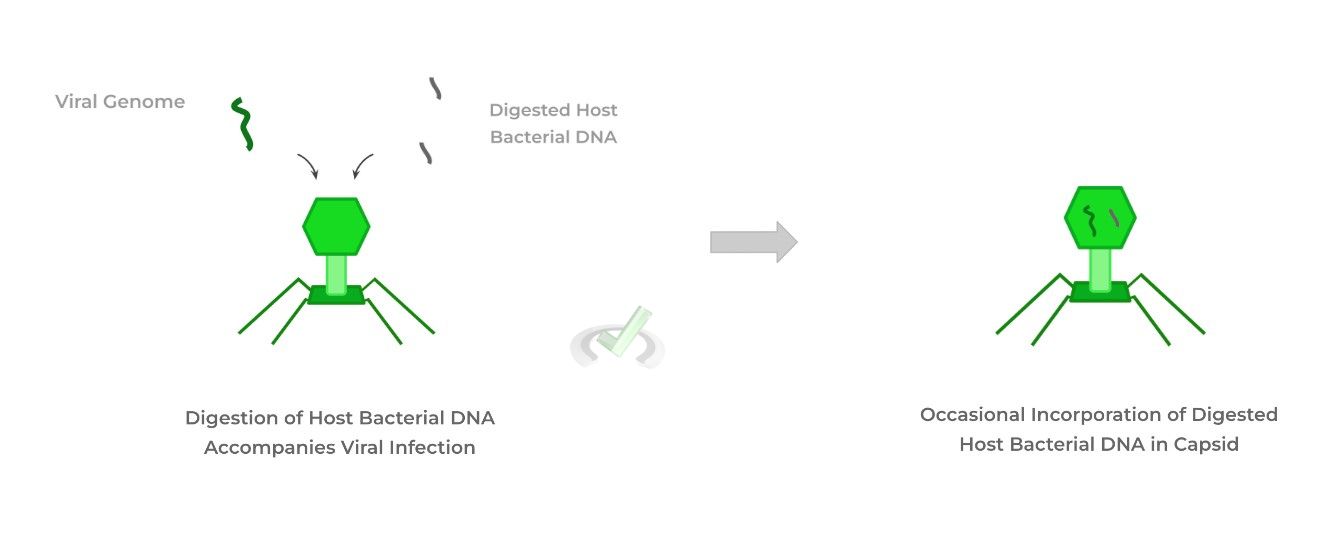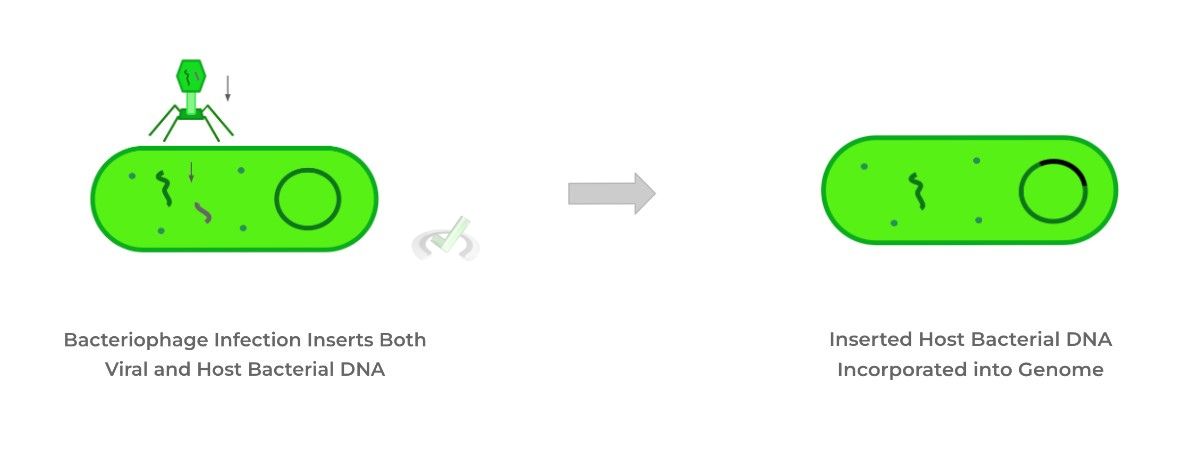I. What is Prokaryotic Genetic Exchange and Recombination?
Don’t be fooled by their simple structure and nature! Though they don’t have the complex pathways and intricacies of eukaryotic cells, prokaryotes also continue to become more complex in their own right with genetic exchange and recombination being a major component.
Not only is the genetic exchange and recombination in prokaryotes, specifically bacteria, interesting to study but also crucial if we want to be ahead of the game in medicinal treatments as it’s through these processes that bacteria can acquire resistance to medical treatments as we’ll discuss later.
Another fascinating aspect of prokaryotic genetic exchange and recombination is their application in a laboratory and research setting! As you’ll see, some of the underlying mechanisms of these processes have been altered to where we can use them as strategies for laboratory and medicinal benefits!
II. Basics of Prokaryotic Gene Transfer
Before getting into the actual different methods of prokaryotic gene transfer, let’s establish the key concept that extragenomic DNA plasmids can exist within prokaryotes.
A. Existence of Extragenomic DNA Plasmids
Outside from the bacterium’s main circular DNA chromosome, the bacterium can also have extragenomic DNA plasmids, usually circular and smaller.
The term “extragenomic” refers to the plasmids being independent from the main circular chromosome, both in the sense that it did not originate from the genome and it replicates independently.
The main circular chromosome primarily contains genes that encode the information for the bacterium’s survival and reproduction.
Extragenomic DNA plasmids usually have genes that code for more specialized functions outside of survival and reproduction, such as antibiotic resistance!
B. Methods of Prokaryotic Gene Transfer
In the following methods of prokaryotic gene transfer, horizontal gene transfer is being illustrated as gene transfer is occurring between cells within the SAME generation.
This is opposed to vertical gene transfer, which involves genetic hereditary from parent to daughter generations, or DIFFERENT generations.I. Transformation
Arguably the simplest out of the processes, transformation involves the uptake of extragenomic DNA, be it plasmids or fragments, from the bacterium’s environment!
This often occurs when neighboring cells die and lyse, releasing their extragenomic DNA which can be picked up by another bacterium.
The cell must be in a state of competence which describes a state where the cell is able to uptake the DNA often regulated by the environment.
One example of this is in the laboratory where we give a heat or electric shock to allow for a vector plasmid uptake!II. Conjugation
This type of genetic exchange is probably the most common and occurs between cells using a structure called the sex pilus. The F plasmid is a classic example of conjugation!
Here, the F plasmid in a donor (F+) bacteria contains the gene for the sex pilus structure and other genes needed for plasmid transfer.
The sex pilus creates a bridge between the donor (F+) and recipient (F-) cell. After the F plasmid is replicated, it moves through the pili to the recipient cell.
Notice how the previous recipient (F-) cell now becomes a new donor (F+) cell due to the addition of the F plasmid and all the necessary genes needed for plasmid transfer.
In addition, there also may be other genes within the F plasmid that have other functions such as antibiotic resistance which is why conjugation is a great way to generate genetic diversity!III. Transduction
This method utilizes a viral vector, specifically a bacteriophage, in order to target and insert other foreign bacterial DNA into a bacterium. Transduction actually with the infection of another cell.
When packaging the viral genome, sometimes digested, fragmented host bacterial DNA can also be incorporated into the capsid by chance.
When the phage infects another bacteria, both the viral and incorporated host bacterial DNA will be inserted.
The external bacterial DNA can then be integrated into the bacterial host genome via genetic recombination.
III. Bridge/Overlap
One of the main results from the horizontal gene transfer that comes from these 3 processes is the possibility of increased genetic diversity. However, one of the downsides, at least from our point of view, is the imminent development of antibiotic resistance.
I. Acquisition of Antibiotic Resistance and Genetic Adaptability
While all 3 processes can confer antibiotic resistance via gene transfer, the most common would be conjugation. Look at the example below!
Suppose within a population of 3 cells, only 1 has antibiotic resistance via one of the genes in the F plasmid.
After a couple rounds of conjugation, all the cells will have acquired the F plasmid with the antibiotic resistance gene and thus become antibiotic resistant.

In reality, this occurs on a much greater scale which is why the fear of antibiotic resistance is high and why doctors don’t want to use them in cases when not necessary.
IV. Wrap Up/Key Terms
Let’s take this time to wrap up & concisely summarize what we covered above in the article!
A. Existence of Extragenomic DNA Plasmids
Apart from the main circular DNA chromosomes, there are also extragenomic DNA plasmids, usually small and circular, and are independent from the chromosome where they don’t originate from the genome and can replicate independently.
While the genome codes for genes functioning on cell survival and reproduction, extragenomic plasmids may have more specialized genes such as antibiotic resistance!B. Methods of Prokaryotic Gene Transfer
The below mentioned process involves horizontal gene transfer which occurs within the SAME bacterial generation while vertical gene transfer occurs between DIFFERENT generations.
I. Transformation
Probably the simplest form of horizontal gene transfer, transformation involves the uptake of extragenomic DNA from the bacterium’s environment, done only in a state of competence.
This usually results from neighboring cells dying and lysing, where they release their extragenomic DNA that can be picked up by another bacterium.II. Conjugation
Probably the most common form, conjugation involves gene transfer between cells utilizing a sex pilus structure, as seen with the F plasmid.
The donor (F+) cell has the F plasmid which contains the genes for the sex pilus structure and other genes related to plasmid transfer.
After the F plasmid is replicated, the replicated plasmid moves to the recipient (F-) cell through the sex pilus structure.III. Transduction
Utilizing a viral vector, specifically a bacteriophage, transduction actually begins with the infection of another cell.
When packing the viral genome, the virus may also package and incorporate some of the host cell’s digested DNA.
Upon infection of another cell, both the viral genome and incorporated bacterial DNA are inserted into the cell which can then be integrated into the genome!V. Practice
Take a look at these practice questions to see and solidify your understanding!
Sample Practice Question 1:
Which of the following horizontal gene transfer processes involves direct cell to cell contact?
I. Transformation
II. Transduction
III. Conjugation
A. I only
B. III only
C. I and III
D. II and III
Ans. B
Recall that conjugation allows for the transfer of the F plasmid to another cell via the sex pilus which forms a direct cell-cell contact and acts like a bridge.
The remaining forms do not involve cell to cell contact as transformation involves uptake of DNA from the environment while transduction utilizes a viral vector.
Sample Practice Question 2:
A student wants to use a bacteriophage in order to introduce a therapeutic gene to a human skin cell. Can this be done and why or why not?
A. Yes, because the bacteriophage can also infect eukaryotic cells
B. Yes, because the human skin cell is a type of prokaryote
C. No, because the bacteriophage can only infect bacteria
D. No, because the bacteriophage requires a eukaryotic cell for infection
Ans. C
Recall that bacteriophages are viruses that specifically target bacteria, a type of prokaryote.
As such, you cannot use the bacteriophage as a viral vector to introduce the therapeutic gene because a human skin cell is a type of eukaryotic cell, not a prokaryotic cell.







 To help you achieve your goal MCAT score, we take turns hosting these
To help you achieve your goal MCAT score, we take turns hosting these 





















 reviews on TrustPilot
reviews on TrustPilot